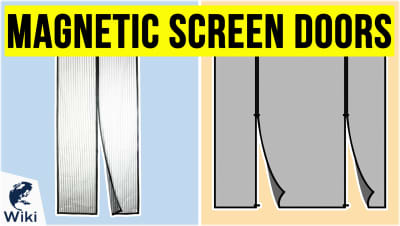What Is The Difference Between Landscape And Portrait?
With the rise of smartphones, more and more people have become interested in photography. Whether you're seriously studying the art form or just taking selfies, you'll want to consider several different factors to make sure your pictures look as good as possible. In this guide, we'll look at the difference between portrait and landscape orientation, and when it's best to use each. This video was made with Ezvid Wikimaker.
When Should I Use Landscape or Portrait?
| Landscape | Portrait | |
|---|---|---|
| Video | ||
| Picture of a wide subject | ||
| Picture of a tall subject | ||
| Your Facebook cover photo | ||
| Your phone lock screen | ||
What is the Rule of Thirds?
The rule of thirds is a way to help you frame your subject within a photo. It's easily visualized by overlaying a grid onto your picture that divides it into nine equal parts. In most cases, you should avoid placing your subject directly in the center of this grid. It's also best to line up the horizon with the border of either the upper or lower third, rather than letting it cut your picture in half. Paying attention to the rule of thirds is an easy way to make your photos more visually appealing.
What Makes a Good Photo?
- Composition: Framing things properly is an important first step
- Lighting: Whether you get your own lights or just use the sun
- Focus: Make sure it looks clear and crisp
- Equipment: A good camera or lens can help improve quality
- Subject: It can be a bird, a city street, or even you
The History of the Selfie
Conclusion
Whether you use a fancy camera, or just like snapping photos on your phone, you probably want your pictures to look as good as they possibly can. There are many factors to take into account, but deciding which way to frame your image is an important one. Knowing whether your subject will look best in landscape or portrait mode will help take your photography to the next level.
In Depth
If you're not a photographer, it can sometimes be difficult to know when to use portrait versus landscape orientation. Even professionals often debate about which works better for a particular photo. There is no right or wrong answer, but there are some guidelines you can follow to help decide which will work better for each picture you take.
Like the name suggests, portrait mode takes its title from paintings and photographs of people, which are typically shot vertically. But it also includes any other picture that is vertical, meaning it has a larger height than width. Portrait orientation is best for shooting subjects that are tall, like a single tree, or a long-legged bird like a flamingo.
Landscape orientation is best suited for horizontal photos that are wider than they are tall. As the name suggests, it is often used to take pictures of natural scenery. If the subject of your photograph is long or spread out, this orientation will probably work best.
Landscape orientation is best suited for horizontal photos that are wider than they are tall.
When it comes to videos, landscape mode is better. It captures more of the surroundings and looks more appealing when uploaded to YouTube or Reddit. On most sites, videos taken in portrait orientation have black bars on both sides. They do not take advantage of the full screen.
The best orientation for your photo also depends on how you plan to use it. For selfies and personal pictures, it's a matter of preference. If it's going to be published on a website or blog, you can use either format. Most computer monitors have wide screens, so both modes can be effective, but try to keep in mind the layout of the page. Pay attention to how the image will fit in with the text. But if you know that your picture will mostly be viewed on mobile devices, portrait mode will work because that is the default orientation for smartphone and tablet screens.
However, not all photographs will follow these rules. Family portraits including multiple people usually need to be wider to get everyone in the shot. An image of a particular aspect of a landscape can sometimes look better in portrait orientation depending on its shape. On the other hand, a tall object can be more appealing in landscape mode with more of the surroundings included in the picture.
An image of a particular aspect of a landscape can sometimes look better in portrait orientation depending on its shape.
Another thing to consider when choosing an orientation is the rule of thirds, which refers to where your subject is placed in the photo. It's best to keep the main focus in the upper, lower, left, or right third of the frame. This helps to draw attention to certain parts of the image. It also makes your pictures more interesting. If your subject is always directly in the middle, your pictures can start to get a little boring. If it is not possible to apply the rule of thirds in portrait mode, your photo may be better suited for landscape.
If you have trouble figuring out where to place your subject, many digital cameras have a grid feature that you can enable. It places vertical and horizontal lines over the image to help you visualize the rule of thirds. The iPhone also has a grid mode, which can be turned on under your camera settings. Some Android phones have this option as well, but if it isn't built into yours, there are apps you can install to enable it.
The best way to determine which mode to choose for your photos is to experiment with both and learn what works for you. Some pictures can look better in landscape orientation even if the subject is vertical. You may want to focus on a particular aspect of an image that is more effectively highlighted by one mode or the other. At the end of the day, it's still a matter of personal preference, especially if the photos are just for your own use.













